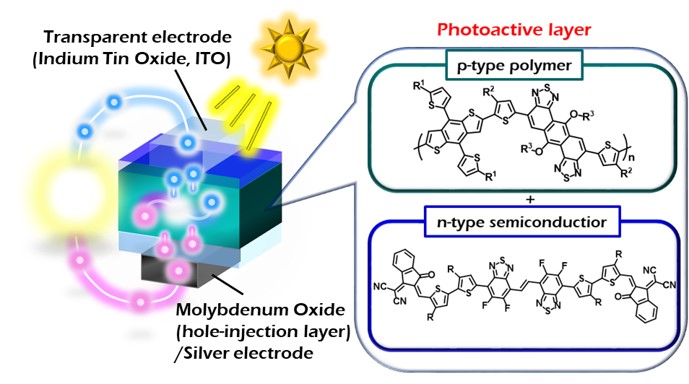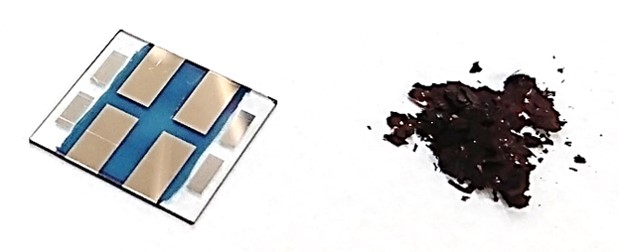Example
Development of high-performance materials for organic photovoltaics for the next generation of renewable energy
Aims and scope
Organic photovoltaics (OPVs) have attracted much attention as a renewable energy source because of their many remarkable advantages, including light weight, flexibility, and ease of fabrication of large-area devices using low-energy processes such as printing technology. However, improvements in power conversion efficiency (PCE) are highly required for practical applications due to their lower PCE compared to conventional silicon solar cells. In this study, we focus on the development of novel high-performance p- and n-type semiconductors for OPVs based on unique π-conjugated molecules developed by our group. We have succeeded in developing new p-type semiconducting polymers based on phenacene-type molecules, and solar cells fabricated using these new phenacene-based polymers have exhibited a high PCE of over 9%.
Future plan
In order to realize a low-carbon society, we aim to achieve practical PCE of 15% through developing high-performance p-type semiconducting polymers and n-type semiconductors.


URL
http://chem.okayama-u.ac.jp/~funcchem/top/
Representative
